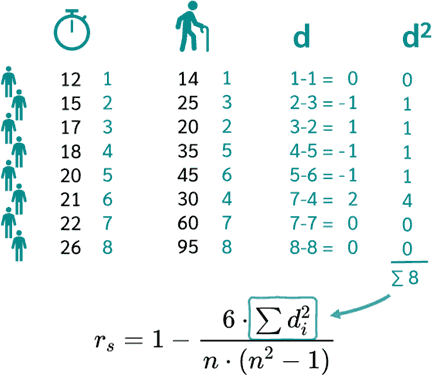One-Way Analysis of Covariance (ANCOVA)
One-Way Analysis of Covariance (ANCOVA)
ANCOVA is a statistical technique that combines features of both analysis of variance (ANOVA) and regression analysis. It is used to compare the means of two or more groups while controlling for the effects of one or more covariates. In other words, ANCOVA allows us to test the effect of a factor (independent variable) on a dependent variable while taking into account the effect of other variables (covariates) that may be related to both the independent and dependent variables.
The one-way ANCOVA
(analysis of covariance) can be thought of as an extension of the one-way ANOVA to incorporate a covariate. Like the one-way ANOVA, the one-way ANCOVA is
used to determine whether there are any significant differences between two or
more independent (unrelated) groups on a dependent variable.
ANCOVA,
or the analysis of covariance, is a powerful statistical method that analyzes
the differences between three or more group means while controlling for the
effects of at least one continuous covariate.
ANCOVA
is a potent tool because it adjusts for the effects of covariates in the model.
By isolating the effect of the
categorical independent variable on the dependent variable, researchers can
draw more accurate and reliable conclusions from their data.
In
this post, learn about ANCOVA vs ANOVA, how it works, the benefits it provides,
and its assumptions. Plus, we’ll work through an ANCOVA example and interpret
it!
How
are ANCOVA and ANOVA different?
ANCOVA
is an extension of ANOVA. While ANOVA can compare the means of three or more
groups, it cannot control for covariates. ANCOVA builds on ANOVA by introducing
one or more covariates into the model.
Assumptions:
The dependent variable is normally distributed within each group.
The relationship between the covariate(s) and the dependent variable is linear.
The covariate(s) is measured without error.
Procedure:
1. Calculate adjusted means: Compute the mean value of the dependent variable for each group, adjusted for the effects of the covariate(s).
2. Conduct ANOVA: Test for significant differences in adjusted means between groups.
3. Interpret results: Determine if the groups differ significantly after controlling for the covariate(s).
Advantages:
Controls for the influence of confounding variables.
Increases statistical power by reducing error variance.
Provides a more accurate estimate of treatment effects.
Disadvantages:
Requires assumptions that may not always be met.
Can be more complex to interpret than ANOVA.
Limitations:
Requires a large enough sample size to have sufficient statistical power for both the regression and ANOVA analyses.
Assumptions about linearity and normality must be met for the regression model.
Only controls for measured confounding variables; unmeasured confounding variables may still bias the results.
Example:
Consider an experiment to compare the effectiveness of three teaching methods on students' test scores. If there are pre-existing differences in students' academic abilities, we can use ANCOVA to control for this covariate and ensure that the comparison is fair.
Output:
The ANCOVA output will provide:
Adjusted means: Average test scores for each teaching method after adjusting for academic abilities.
F-statistic and p-value: Indicate whether there is a significant difference between teaching methods.
Regression coefficients: Describe the relationship between the covariate (academic abilities) and the dependent variable (test scores).
Example:
Study Design:
A clinical trial to compare the efficacy of two different diabetes medications (Medication A and Medication B) on glycated hemoglobin (HbA1c) levels.
Variables:
Independent Variable: Diabetes medication (Medication A vs. Medication B)
Dependent Variable: Change in HbA1c levels from baseline
Covariate: Baseline HbA1c level (used to adjust for potential confounding)
Model:
Change in HbA1c = β0 + β1 Medication + β2 Baseline HbA1c + ε
Procedure:
1. Measure baseline HbA1c levels for all participants.
2. Randomly assign participants to receive Medication A or Medication B.
3. Treat participants for a predefined period.
4. Measure HbA1c levels at the end of the treatment period.
Analysis:
1. ANCOVA Model: Estimate the effect of medication on change in HbA1c, while adjusting for baseline HbA1c levels.
2. Test for Medication Effect: Use an F-test to determine if the effect of medication is statistically significant.
3. Post-hoc Tests: If the medication effect is significant, conduct post-hoc tests to compare the mean change in HbA1c between the two medication groups.
Interpretation:
If the medication effect is significant, it suggests that the change in HbA1c levels is different between the two medication groups, after adjusting for baseline HbA1c levels.
The covariate effect of baseline HbA1c level indicates that individuals with higher baseline HbA1c levels had a greater change in HbA1c levels, regardless of the medication they received.
Example Results:
ANCOVA Results:
F-test for Medication Effect: F(1, 100) = 5.63, p = 0.02
Post-hoc Tests:
Change in HbA1c (Medication A - Medication B): -0.5%, 95% CI (-0.8%, -0.2%)
Conclusion:
Based on these results, Medication A was found to be more effective than Medication B in reducing HbA1c levels in individuals with diabetes, when adjusted for baseline HbA1c levels.
......................................................................................................
👉 For the data analysis, please go to my Youtube(Ads) channel to Watch Video (Video Link) in
Youtube Channel (Channel Link) and Download(Ads) video.
💗 Thanks to Subscribe(channel) and Click(channel) on bell 🔔 to get more videos!💗!!
- Tell: (+855) - 96 810 0024
- Telegram: https://t.me/sokchea_yann
- Facebook Page: https://www.facebook.com/CambodiaBiostatistics/
- TikTok: https://www.tiktok.com/@sokcheayann999
- STATA for dataset restructuring, descriptive and analytical data analysis
- SPSS for dataset restructuring, data entry, data check, descriptive, and analytical data analysis
- Epi-Info for building questionnaires, data check, data entry, descriptive, and analytical data analysis
- Epidata-Analysis for dataset restructuring, descriptive and analytical data analysis
- Epi-Collect for building questionnaires, remote data entry, mapping, and data visualization
- Epidata-Entry for building questionnaires, data check, data entry, and data validation
ABA Account-holder name: Sokchea YAN
ABA Account number: 002 996 999
ABA QR Code:
or tap on link below to send payment:
https://pay.ababank.com/iT3dMbNKCJhp7Hgz6
✌ Have a nice day!!! 💞



.png)



Comments
Post a Comment